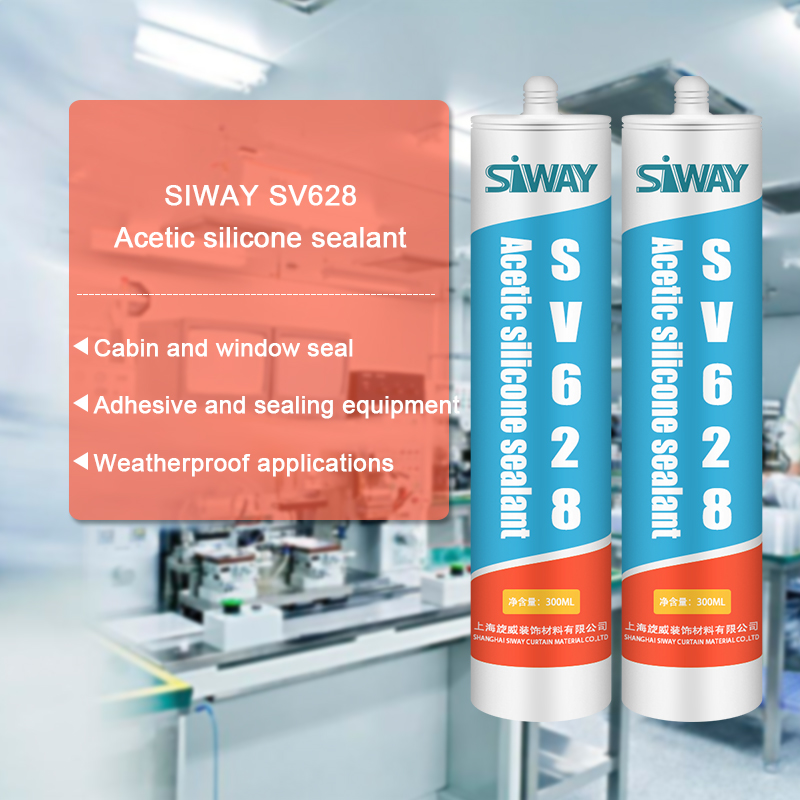Free sample for Siway SV-602 Epoxy Structural Adhesive A/B for Kenya Factories
Short Description:
Description SV-602 is a 2-part structural epoxy adhesive developed for such application as dry fixing cladding. It has strong adhesion to metals, woods, reinforced plastics stone, ceramic and masonry. It is the best choice for bonding parts which must withstand weather, moisture and temperature fluctuations. SV-602 will adhere with minimum surface preparation and has a low coefficient of expansion. Key Features 1. Room temperature curing Epoxy adhesive 2. Fast cure at room temperature,...
Our products are widely recognized and trusted by users and can meet continuously changing economic and social needs for Free sample for Siway SV-602 Epoxy Structural Adhesive A/B for Kenya Factories, Our company maintains safe business mixed by truth and honesty to keep long-term relationships with our customers.
Description
SV-602 is a 2-part structural epoxy adhesive developed for such application as dry fixing cladding. It has strong adhesion to metals, woods, reinforced plastics stone, ceramic and masonry. It is the best choice for bonding parts which must withstand weather, moisture and temperature fluctuations. SV-602 will adhere with minimum surface preparation and has a low coefficient of expansion.
Key Features
1. Room temperature curing Epoxy adhesive
2. Fast cure at room temperature, <40 min for reaching a tack-free status under standard environment (STD: 23℃, 50% humidity)
3. Mix ratio of 1:1 by volume or by weight
4. Good mechanical property
5. Bonds a wide variety of building materials
6. Good waterproofing and chemical resistance
Basic Application
1, the external walls of stone material, ceramic and other hang bond;
2, concrete, ceramics, stone, wood and other prefabricated split, bonding and jointing;
3, concrete, stone and so on crack repair;
4, the structure of the localization, anchor, reinforcement and reinforcement.
Technical data sheet
The following data is for reference only and is not recommended for the specification
| Shear strength | Stainless steel-stainless steel/Standard conditions | ≥18 | JC887-2001 | ||
| Pressure shear strength | Stone-stone/ Standard conditions | ≥12 | |||
| Stone-stone/ The freeze-thaw cycle 50 times | ≥10 | ||||
| Stone – stainless steel/ Standard conditions | ≥12 | ||||
| Standard conditions:Temperature=23℃,relative humidity=50%,48 hours curing | |||||
| attribute | SV-602-A | SV-602-B | SV-602(After mixing) | ||
| Colour | gray | white | grey | ||
| Density(g/cm³) | 1.8 | 1.8 | 1.8 | ||
| Viscosity(PaS) | 200-400 | 150-250 | |||
| Effective operating time(23℃) | N/A | N/A | 20min | ||
Certification
JC 887-2001
Color
Part A-Grey Paste/Part B-White Paste
Package
9kg/9kg per unit and 15kg/15kg per unit
Shelf life
12 months
Note
If you want the TDS or MSDS or other details, please contact with our sales person.
Thought I’d do a quick tutorial of something I’ve been messing with. This is how to use silicone caulk (as in the type you buy at the hardware store) to make a mold of something. Since silicone bonds to very little, it works great! I prefer this to latex molds.
For quick reference, to make the material for the mold, use silicone I caulk (DO NOT USE SILICONE II), acrylic paint, and glycerin. The ratio for mixing that works best is 1 ounce of silicone, a dab of paint (I’d say a drop, but the acrylic never comes out in drop form), and 3-4 drops of glycerin. More glycerin can be used, but the more you add of the glycerin, the quicker the silicone will start to dry and the stiffer it will become, so be careful and work quickly!
I made this specifically with fursuiters in mind, especially those who like adding realistic follow-me eyes in their heads, but maybe can’t find a good mold to use to make resin eyes. But it can be used for many type of molds. If you are unsure if the silicone will work, do a small test with a tiny bit of the silicone mixture. I’ve managed to pull the silicone off of a variety of things (wood, metal, plastics) but it’s always better to be safe than sorry.
Forgot to mention in the video, but silicone, once dry, can be cut very easily with scissors, so you can use it for a variety of projects, and trim up your molds to look prettier than mine.
Split into two parts because Youtube wouldn’t accept one large video.
Part 1: https://www.youtube.com/watch?v=cmgUhdSqgtU




